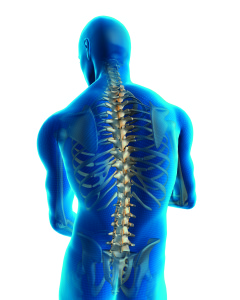 Discs are essentially shock absorbers of the spine. They wear out just like tires on your car. So, to explain why, it is best to remember that tires on your car wear out depending what kind of tires you start with and how you drive your car. The same applies for the discs in your spine. You start with whatever genetically determined material you have and then it depends how much you use (or abuse) your spine.
Discs are essentially shock absorbers of the spine. They wear out just like tires on your car. So, to explain why, it is best to remember that tires on your car wear out depending what kind of tires you start with and how you drive your car. The same applies for the discs in your spine. You start with whatever genetically determined material you have and then it depends how much you use (or abuse) your spine.
What is a Herniated Disc?
Disc Herniation happens when a part of the disc comes out and protrudes outside of its normal position. Unfortunately, the nerves that are in the immediate vicinity are often compressed by this herniation. So, the nerves start to “feel” pain. The pain often goes down the leg or arm even though the problem is in the spine because the nerves extend that way. As a result of the nerve being compressed, its function (strength and feeling) can be compromised and so one may feel numbness or weakness as well.
Sometimes, it is not just the pressure that causes nerve irritation or damage. A number of chemicals are also believed to be released around the nerve, causing inflammation. In addition, the movement of the spine can irritate the nerve too.
Now, the vicious circle: the body tries to eliminate movement (just like if you had a broken rib or arm). The strong muscles of the spine clamp down (spasm) and they hurt. As they contract, the hole where the nerve is passing through gets smaller. So, the nerve gets compressed and inflamed more and it starts to hurt more. As the nerve hurts more, the muscles contract (to immobilize) more and you get more back pain along with smaller space for the nerve. This goes on and on.
Treating a Herniated Disc
The trick is to break this cycle. Knowing what you know now you can understand the entire treatment plan and why it works.
- Decrease inflammation of the nerve
- Anti-inflammatory medications (NSAIDS)
- Steroids
- Epidural injections [steroid and numbing medicine placed right next to the nerve(s)]
- Relax the spine muscles
- Muscle relaxant medications may work
- Stretching and/or traction
- Appropriate exercise with physical therapy
- Immobilize the spine
- Brace
- Bed rest
- Decompression of the nerve
- Non-invasive maneuvers such as traction
- Chiropractic manipulation
- Surgical direct decompression
- Prevention of injury
- Nutritional treatment
- Weight reduction – less pressure on the discs makes it less likely for disc to herniate or get damaged
- Improve joint health (think of the discs as big joints of the spine)
- Learning appropriate body positions and exercises
- Strengthen the muscle around the spine to protect the spine joints by Yoga/Pilates, physical training, etc.
- Nutritional treatment
- Other case specific treatments often exist
The real art of medicine comes into play when your doctor can combine these modalities of treatment in the right proportion, at the right time, and on a suitable timeline and safe manner. As a Los Angeles spine surgeon, I commonly treat patients with disc herniation using a combination of the above mentioned treatments.
Contact the Expert Los Angeles Spine Surgeon Today!
If you are living with the pain and discomfort caused by a herniated disc, there is hope for relief. The important thing is to visit a highly experienced spine surgeon to receive the most appropriate treatment. Contact me at ProMedSPINE by calling 888-75-SPINE today to schedule a consultation!
To learn more about herniated discs, contact our office.